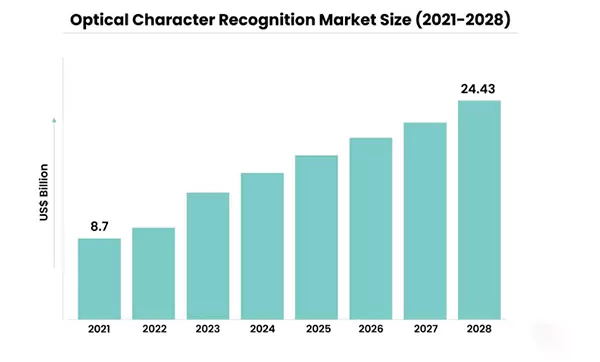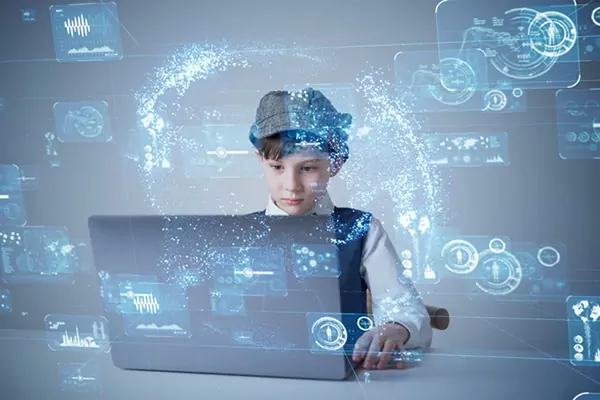
We are the generation that has witnessed the most technological developments. From complete dependence on papers to entire or partial reliance on digital document formats, we have seen it all.
Automation has changed the way we live and work. While artificial intelligence is transforming the world, this transition is only the tip of the iceberg. There is a lot more to come.
One of the transitions is turning images into text, which is called OCR or optical character recognition. Simply put, it is a process of taking pictures of writing and converting them into text.
This technology is streamlining the workflow in various domains. In this article, we will discuss OCR in-depth and some of the aspects related to it. So without any further delay, let’s get started.
What Exactly Does the OCR Technology Entail?
The term ‘OCR’ is a short form for Optical Character Recognition. It is a fancy way of referring to tools that perform digital document or image-to-text conversions. This means that it can extract the script from various digital files like PDFs, scanned documents, or images and present it in editable form. But how does it work?
In old times, OCR employed simpler algorithms, such as pattern recognition or template matching.
These systems required precise alignment and preprocessing to work well. The absence of these requirements often resulted in a struggle with font, size, and print quality varieties. But times have changed now.
These days, OCR systems leverage deep learning models like machine learning and neural networks.
The two most popular deep learning models commonly used in the OCR systems of today are CNN/ConvNet (Convolutional Neural Network) and RNN (Recurrent Neural Network). These models can manage complex document layouts, understand detailed features, and adapt to various fonts.
Plus, the modern-day optical character recognition tools take aid from large datasets. This elevates their ability to generalize to different styles and backgrounds.
So, the integration of Machine Learning and Neural Networks has improved the accuracy of image-to-text tools and made them more robust.
The graph below depicts the optical character recognition market size from 2021 and 2028. You can acknowledge that the respective technology has gained traction and will augment in upcoming years.

How is the OCR Technology Proving to be a Game Changer?
Optical character recognition has emerged as a revolutionary force in this dynamic world. This technology has changed the way we interact with information.
So, let’s see how the integration of sophisticated image-to-text tools like the one offered by www.imagetotexttools.com has and continues to optimize the workflow across various domains:
Enhances Productivity and Reduces the Manual Transcription Risks
People in the old days were indeed completely reliant on manual data entry approaches. But most corporate world businesses or organizations have stopped this practice.
Nowadays, they rely more on OCR systems because of the time-consuming and risky nature of manual data-entering techniques.
The optical character recognition systems can quickly convert images or scanned documents into editable or searchable text. By integrating them into data entry processes, several companies nowadays are saving time and enhancing the productivity of their employees.
The inclusion of image-to-text tools also assists in eliminating the dangers involved with manual transcription.
Automates the Time-Consuming Data Extraction Process
Corporate businesses or organizations often have to deal with a vast sea of data and information.
However, if a company relies entirely on physical file or document storage, extracting valuable insights becomes a challenging endeavor. This issue won’t occur by switching to digital document storage and incorporating OCR technology.
The image-to-text tool automates the process of data extraction from any type of scanned document, such as forms, invoices, and receipts. So, by taking assistance from such a system, people belonging to the corporate landscape can streamline their data extraction processes.
The integration of optical character recognition systems even allows organizations to make wise decisions by providing them with precise and easily accessible information.
Transforms the Education Landscape by Catalyzing Innovation

Students’ success depends highly on the easy distribution of material across the education landscape. This factor is the major reason why most students fail to perform well at the academic level.
But thankfully, various tech-embracing educational institutes have eliminated this issue with the integration of optical character recognition tools.
Like businesses, several educational institutes have also started using OCR technology in recent times. Therefore, nowadays, students can easily get digitized textbooks.
This situation is even more helpful for foreign students because they can instantly translate the digital content into a language of their choice.
Here’s a Fun Fact:-
The largest OCR machine is the size of a football field.
A Few Limitations Associated with the OCR Revolution
Optical Character Recognition has undoubtedly brought about revolutionary improvements. But its addition has also given rise to the following challenges:
- Training the character recognition algorithms of OCR systems will take time to work for various fonts, document formats, and languages.
- The output depends highly on the quality of the image-to-text tools.
- Taking assistance from unreliable OCR services may result in privacy issues.
To Sum Up – The Final Verdict
All in all, the impact of optical character recognition extends far beyond mere text transformation in this revolutionary landscape. OCR technology has nowadays become a catalyst for positive change across various industries.
This revolution of positive change has enabled individuals and organizations alike to fully utilize the information in this digital era.